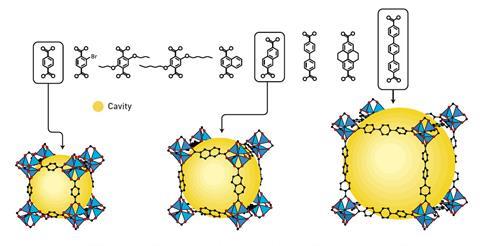**The 2025 Nobel Prize in Chemistry: A Focus on Metal–Organic Frameworks**
The 2025 Nobel Prize in Chemistry has been conferred upon Susumu Kitagawa, Richard Robson, and Omar Yaghi for their groundbreaking contributions to metal–organic frameworks (MOFs). Their innovative research has unveiled new opportunities for various applications owing to the distinctive structure and attributes of MOFs.
### What constitutes a Metal–Organic Framework?
Metal–organic frameworks are substances made up of metal ions linked by organic molecules, creating a 3D network. These frameworks have extensive, porous cavities, making them exceptionally absorbent; in fact, a mere gram of a MOF can span the area of two American football fields. This trait exceeds the absorbency of alternative porous materials, making MOFs advantageous for uses like gas storage, filtration, and carbon capture.
### Why are MOFs deserving of a Nobel Prize?
MOFs are celebrated for their extraordinary capability in tailoring materials with targeted functionalities. The seminal work by Robson in the development of ‘coordination polymers,’ along with subsequent advancements by Yaghi and Kitagawa, has sparked tremendous interest and expansion in the discipline. Their contributions have significantly altered the approach chemists take in designing materials, shifting from linear molecular configurations to extensive 3D architectures, thereby broadening the horizons of material science.
### The Achievements of the Laureates
During the 1980s, Richard Robson created the inaugural MOF, demonstrating that constructing an infinite framework could be predictably achieved. Omar Yaghi introduced the term ‘metal–organic framework’ and showcased their stability and capacity to capture and release molecules. Susumu Kitagawa advanced this field by creating MOFs with open channels capable of absorbing gases without compromising their structure. Collectively, their advancements have founded a new sphere of chemistry with far-reaching consequences.
### Uses of MOFs
MOFs have found applications in various fields such as extracting moisture from arid air, gas storage, and purifying water from contaminants. Enterprises have begun to commercialize MOFs to enhance the shelf life of perishable goods and securely store gases. Significantly, the CALF-20 MOF is utilized in carbon capture technologies, playing a crucial role in efforts to diminish industrial emissions.
Recent developments include collaborations with AI technologies, such as those from Meta, to create new MOFs specifically designed for more effective carbon capture. The integration of AI signals an exciting new phase in the continuous advancement and discovery of MOF applications, with the potential to expedite progress dramatically.
This Nobel Prize not only honors past accomplishments but also lays the groundwork for future innovations, highlighting the significant influence MOFs persistently have on science and industry.
